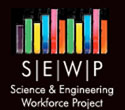America's New Immigrant Entrepreneurs
In 'America's New Immigrant Entrepreneurs',
Vivek Wadhwa and his colleagues at Duke University assess and analyze the contributions
that immigrants have made to the engineering and technology business sector.
Of all of the science and engineering companies started between 1995 and 2005,
25.3% listed an immigrant as a key founder, with 32.5% of semiconductor companies
and 31.7% of computer companies founded by immigrants. Unsurprisingly, these
companies are primarily located in California, which hosts 34% of immigrant-founded
companies, followed by New Jersey with 7.3% of immigrant-founded companies.
Twenty six percent of immigrant-founded companies are founded by Indians, more
than the combined shares of immigrants from the UK, China, and Taiwan, the next
highest origin countries. The shares of international patents filed by Indians
and Chinese have increased as well, from under 2% each in 1998 to around 6%
each in 2005. Immigrants to the US have increased their inventiveness as well:
patents filed by immigrants increased from 7.3% in 1998 to 23.5% in 2005. The
authors estimate that companies founded by immigrants contributed $52 billion
to the US economy between 1995 and 2005, creating 450,000 jobs.
In their follow
up study, Education, Entrepreneurship, and Immigration, the authors interviewed
immigrant executives from top science and engineering firms across the country.
They found that these executives had usually come to the United States after
1980, to work for a company or study at a university, but went on to start their
own businesses. Most were highly educated, having obtained graduate degrees
in STEM fields or in business. Although some had gone to the elite universities
of their home countries, most had been educated in the United States, and at
a wide variety of schools, not only elite but also second and third-tier schools.
These immigrants then concentrated themselves in technology hubs such as Silicon
Valley, areas which are most friendly to immigrant-founded startups. The authors
conclude that immigrant entrepreneurs take advantage of U.S. education in math,
science, technology, and engineering, and use it to contribute greatly to innovation
and technological advancement.
Wadhwa, Vivek, Saxenian, AnnaLee, Rissing, Ben and Gereffi, Gary,
"America's New Immigrant Entrepreneurs: Part I" (January 4, 2007). Available
at SSRN: http://ssrn.com/abstract=990152
Wadhwa, Vivek, Rissing, Ben, Saxenian, AnnaLee and Gereffi, Gary,
"Education, Entrepreneurship and Immigration: America's New Immigrant Entrepreneurs,
Part II" (June 11, 2007). Available at SSRN:
http://ssrn.com/abstract=991327
The Prognosis for Chemistry
In 2006, the National Research Council (NRC) Report, Rising Above the Gathering
Storm: Energizing and Employing America for a Brighter Economic Future, noted
that only one of 120 chemical plants costing $1 billion or more being built
around the world is in the U.S., while 50 are in China. Earlier this year, the
NRC released a new report, titled The Future of U.S. Chemistry Research: Benchmarks
and Challenges, which took a closer look at U.S. chemistry and chemistry in
other nations. The new report indicates that two important factors behind the
strength of U.S. chemistry today are English being the dominant language of
chemistry research and the dominance of the ACS's journals. It also points out
that the U.S. chemical research effort because of its sheer size cannot be meaningfully
compared with that of any other single nation. Comparisons need to be with regional
groups of nations in Asia and Europe.
Full Report: http://pubs.acs.org/cen/science/85/8521sci2.html
News
Workplace News
Policy News
> Education Policy
> Federal Research Organizations
> Industry
> Workforce
Education
> New Reports/Research
> K-12 Education
> Higher Education
> STEM Education Programs
International
> Africa
> Asia
> Brazil
> China
> Europe
> India
> Other International Headlines
Science Headlines
Migration News
Upcoming Events
NAE's 2007 US Frontiers of Engineering Symposium
Science and Engineering Workforce Data Workshop
Event Coverage
2007 BIO International Convention in Boston
Days of Molecular Medicine 2007 - Emerging Technologies and Cancer Biology
Bill Gates Speech at Harvard Commencement
2007 Intel International Science and Engineering Fair
Summary of Recent Legislation
> Click here for summaries of recent legislation
Credits
Editor: Kavita Shukla
Contributing Editor: Clara Anderson
Design and Layout:
Jason Anastasopoulos
Contact: sewpnews@gmail.com


